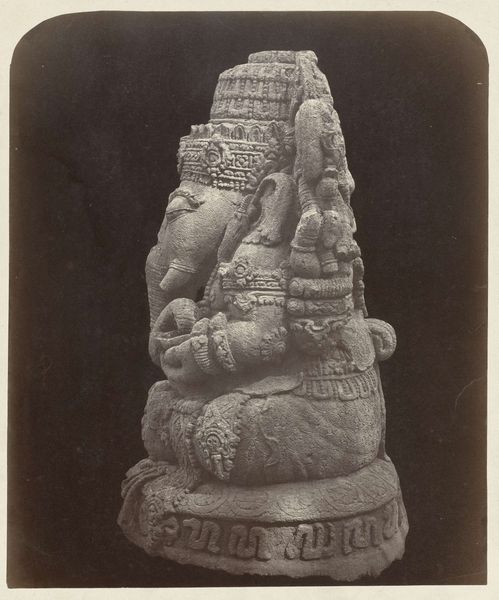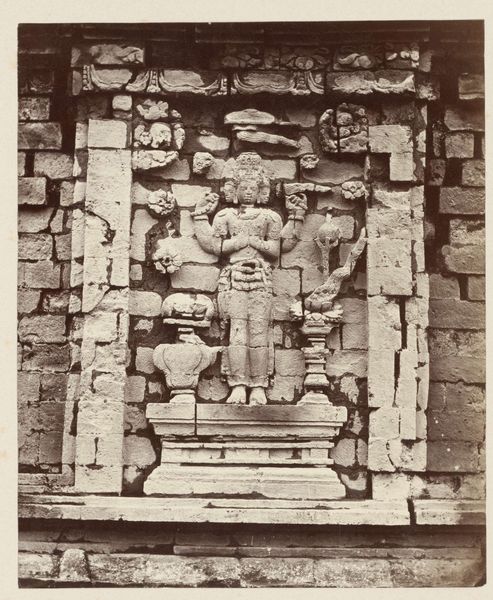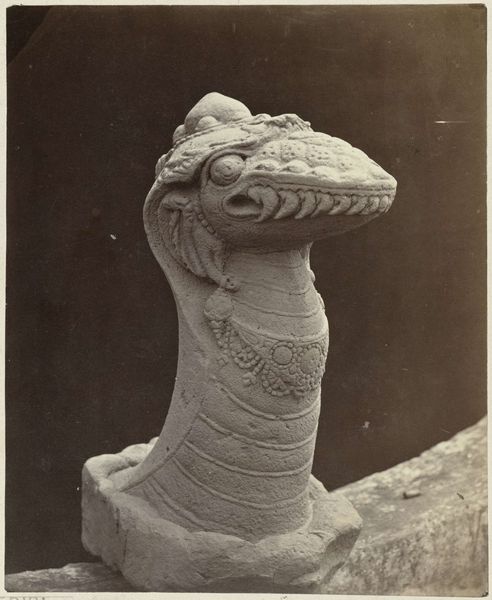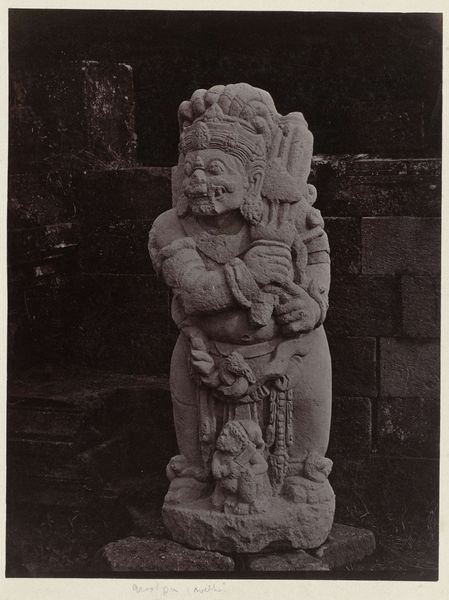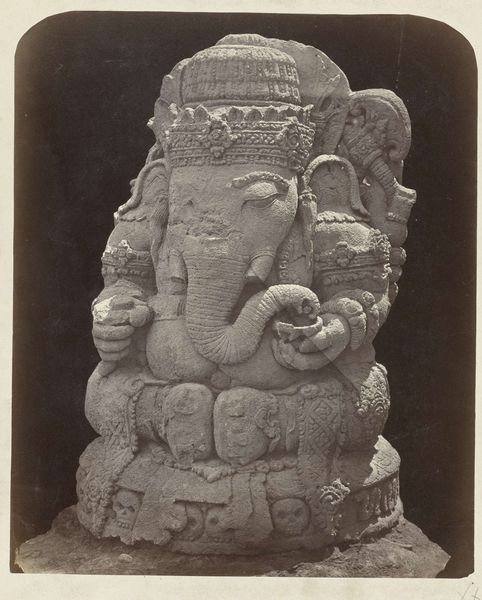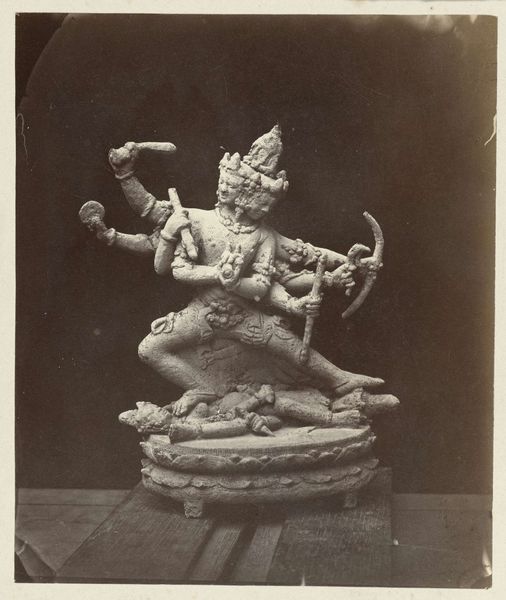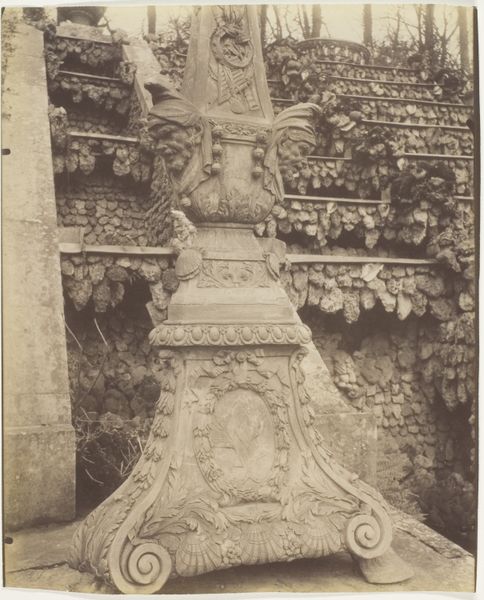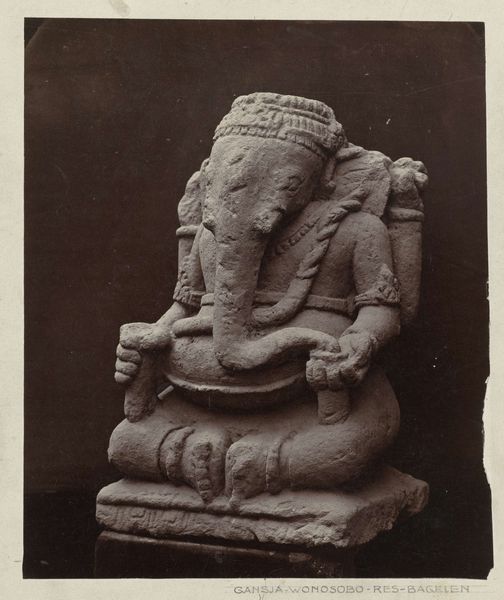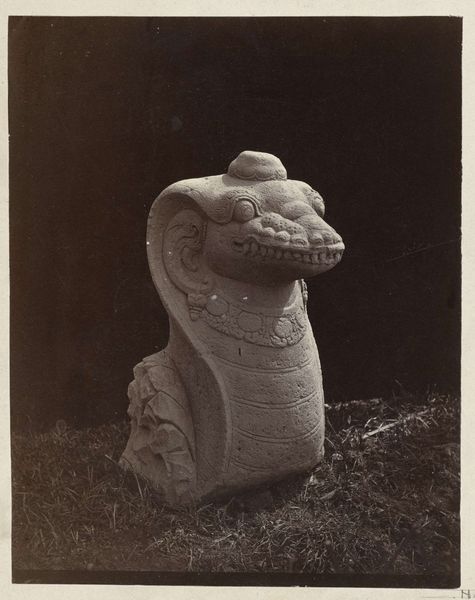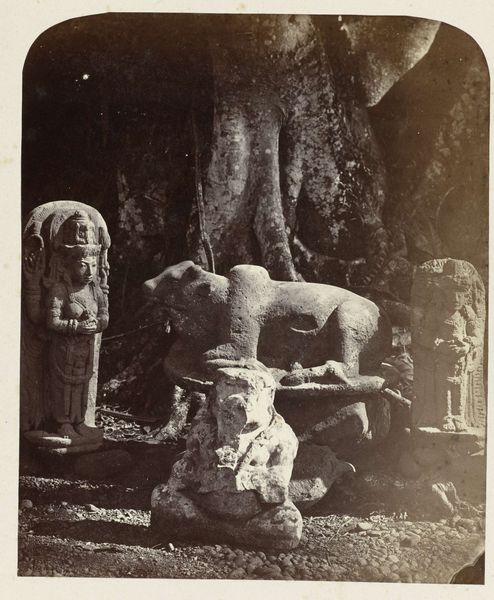
print, plein-air, photography, sculpture
# print
#
plein-air
#
sculpture
#
war
#
classical-realism
#
photography
#
sculpture
#
decorative-art
Dimensions: 21.5 × 17.6 cm (image); 21.5 × 17.9 cm (paper)
Copyright: Public Domain
Curator: Today we’re looking at Eugène Atget's "Versailles, Vase (Detail)," taken in 1906. This photograph captures the intricate details of a sculpted vase in the gardens of Versailles. Editor: It's a melancholic study in stone and light. The somber sepia tone emphasizes the age and the quiet grandeur of this singular object. I feel a profound sense of stillness, a moment captured and preserved. Curator: Indeed, the tonality emphasizes the play of light, drawing our eye to the texture of the stone and the arrangement of forms. Note how the sculptural details - the festoons, the masks - become focal points. Atget, in essence, abstracts a segment of Versailles, distilling the grandeur into this solitary piece. Editor: But what does Versailles, with its legacy of opulence and absolute power, represent? In 1906, France was grappling with social unrest and shifting power structures. This image feels like a relic of a bygone era, an almost mournful portrait of a place steeped in inequity, now ossified and presented as high culture. Is it an attempt to valorize the old order? Curator: That’s a compelling reading. From a formal perspective, it showcases Atget’s mastery of composition. He utilizes the frame to concentrate our attention, building a delicate network of lines and shapes. The balance of light and shadow generates depth and interest. It stands alone as a carefully designed pictorial study, beyond political commentary. Editor: I disagree. An image of Versailles cannot escape its history, no matter how carefully composed. It raises questions about access, privilege, and the narratives we choose to preserve. For whom was this vase crafted? Who was allowed to behold its beauty then, and who gets to do so now within the confines of a museum? It becomes part of a larger conversation about cultural heritage and its role in shaping collective memory. Curator: Perhaps. Yet, let’s also acknowledge the skill with which Atget translated three-dimensional form into two-dimensional art. He captured the subtleties of light reflecting off the sculpted details— the almost painterly gradations in tone, lending sculptural dimension to a flat surface. Editor: I can appreciate the technical mastery while still questioning its cultural implications. It’s a photograph that prompts a discussion about what we choose to venerate. In my view, understanding that conversation is equally important. Curator: A fitting challenge! An observation, through its lens, offers layered insights to ponder, indeed. Editor: It’s precisely through this lens that art, old or new, helps us navigate the complexities of our past and present.
Comments
No comments
Be the first to comment and join the conversation on the ultimate creative platform.
